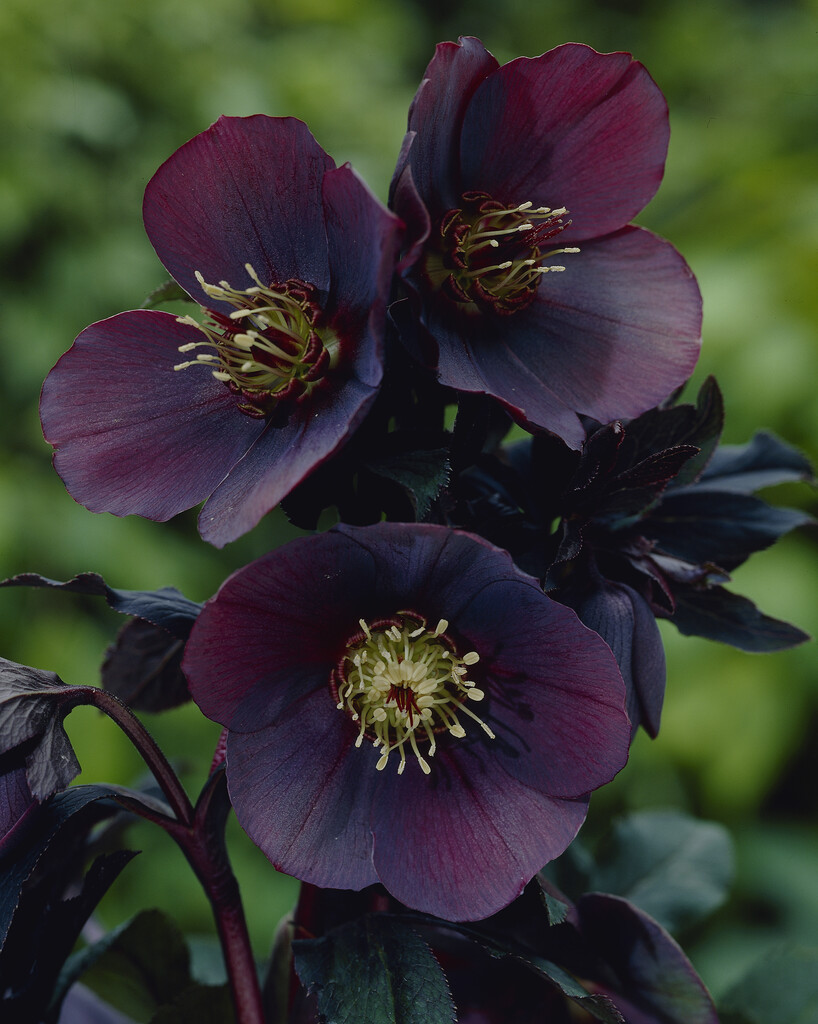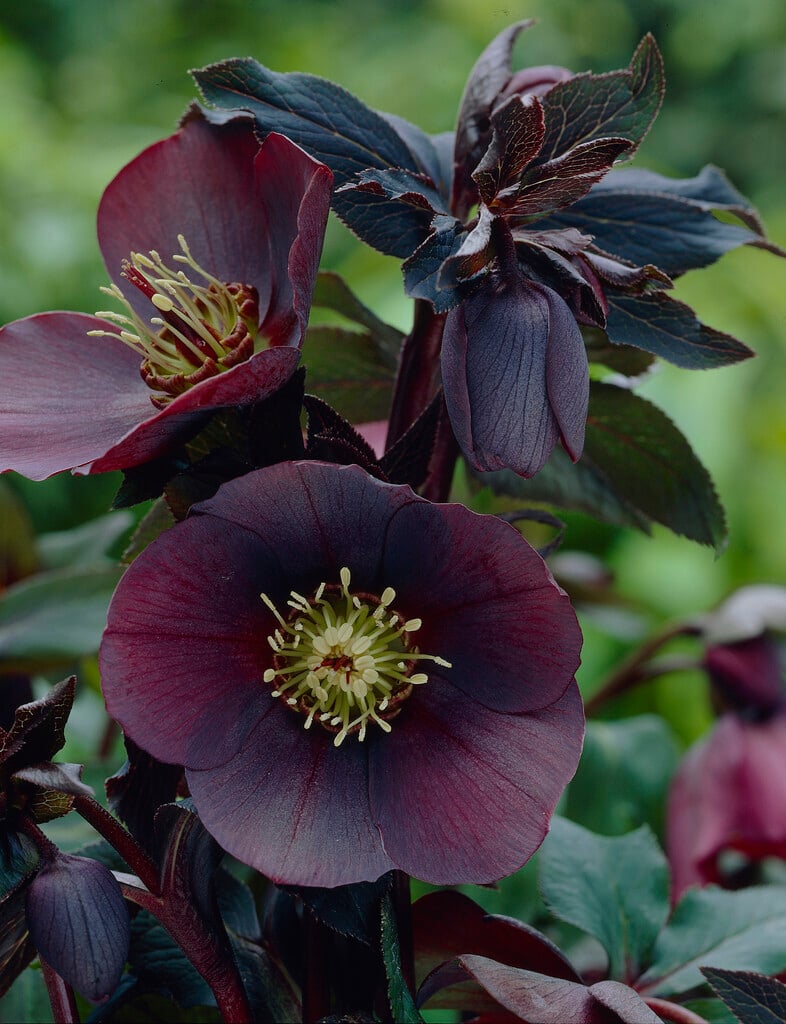Helleborus × hybridus 'Blue Lady' (Lady Series)
hellebore 'Blue Lady'
A semi-evergreen clump-forming perennial with divided, leathery, dark green foliage and branched stems bearing cup-shaped dark purple to blue single flowers and a central boss of yellow stamens in late winter and early spring
Size
Ultimate height
0.1–0.5 metresTime to ultimate height
2–5 yearsUltimate spread
0.1–0.5 metresGrowing conditions
Moisture
Moist but well–drainedpH
Alkaline, NeutralColour & scent
| Stem | Flower | Foliage | Fruit | |
| Spring | Purple | Green | ||
|---|---|---|---|---|
| Summer | Green | |||
| Autumn | Green | |||
| Winter | Purple | Green |
Position
- Partial shade
Aspect
West–facing or South–facing or North–facing or East–facing
Exposure
Sheltered Hardiness
H7Botanical details
- Family
- Ranunculaceae
- Native to GB / Ireland
- No
- Foliage
- Semi evergreen or Evergreen
- Habit
- Clump forming
- Potentially harmful
- Harmful if eaten, skin irritant. Wear gloves and other protective equipment when handling. Pets: Harmful if eaten, skin irritant. For further information and contact numbers regarding pets, see the HTA guide to potentially harmful plants
- Genus
Helleborus can be rhizomatous, herbaceous or semi-evergreen perennials forming a clump of pedate basal leaves, or evergreen with erect, leafy stems. Large, bowl-shaped flowers are borne in loose clusters in late winter or spring
- Name status
Accepted
How to grow
Cultivation
Prefers a humus-rich, fertile, and moisture-retentive soil in partial shade but will tolerate full sun. Protect from strong, cold winds and mulch with a layer of well-rotted organic matter in autumn. See hellebore cultivation for further information
Propagation
Propagate by seed or by division in autumn
Suggested planting locations and garden types
- City and courtyard gardens
- Cottage and informal garden
- Wildlife gardens
- Flower borders and beds
- Underplanting of roses and shrubs
Pruning
Cut back to the ground brown or dead foliage in late winter when flower buds start to develop
Pests
May be susceptible to hellebore aphid, hellebore leaf miner and snails
Diseases
May be susceptible to hellebore leaf spot and hellebore black death
Get involved
The Royal Horticultural Society is the UK’s leading gardening charity. We aim to enrich everyone’s life through plants, and make the UK a greener and more beautiful place.

